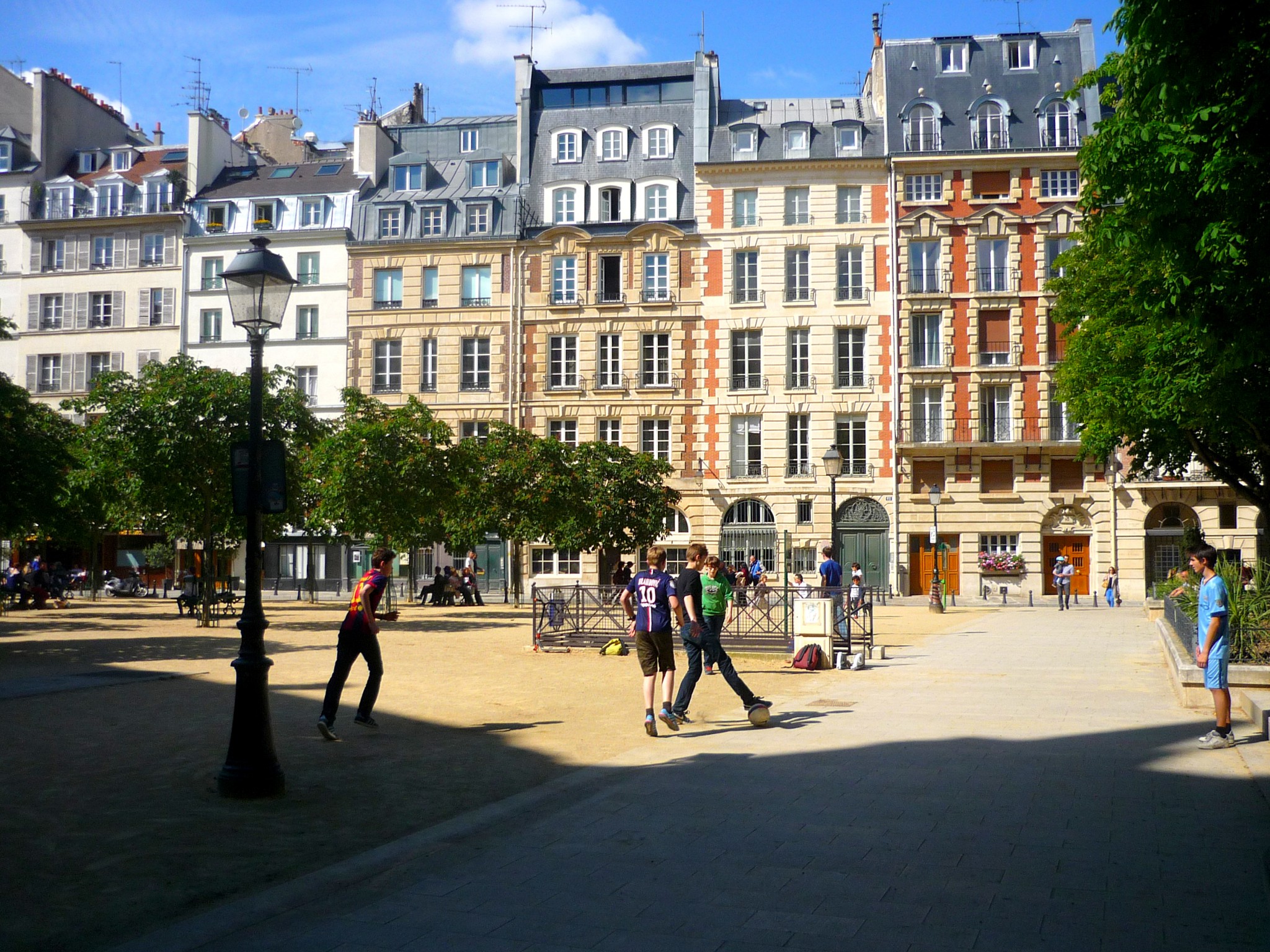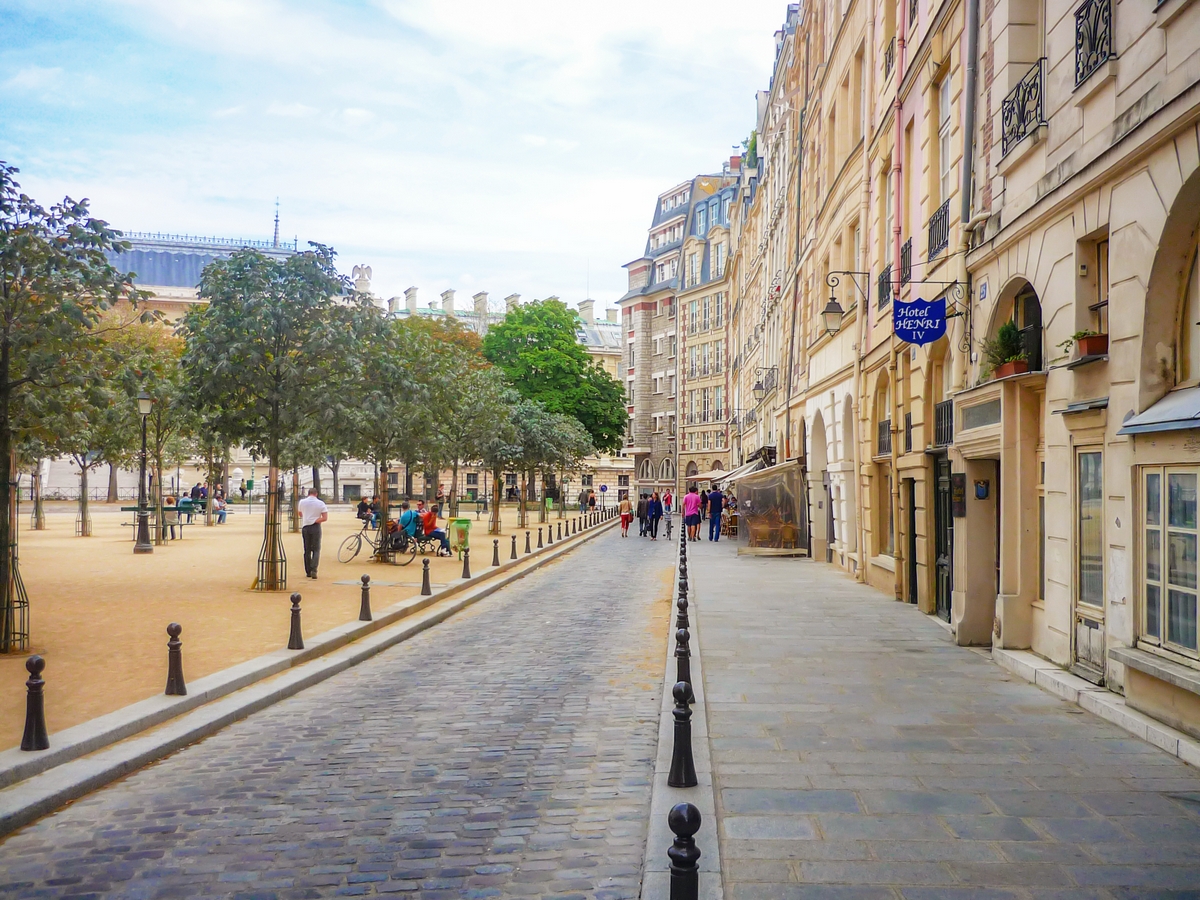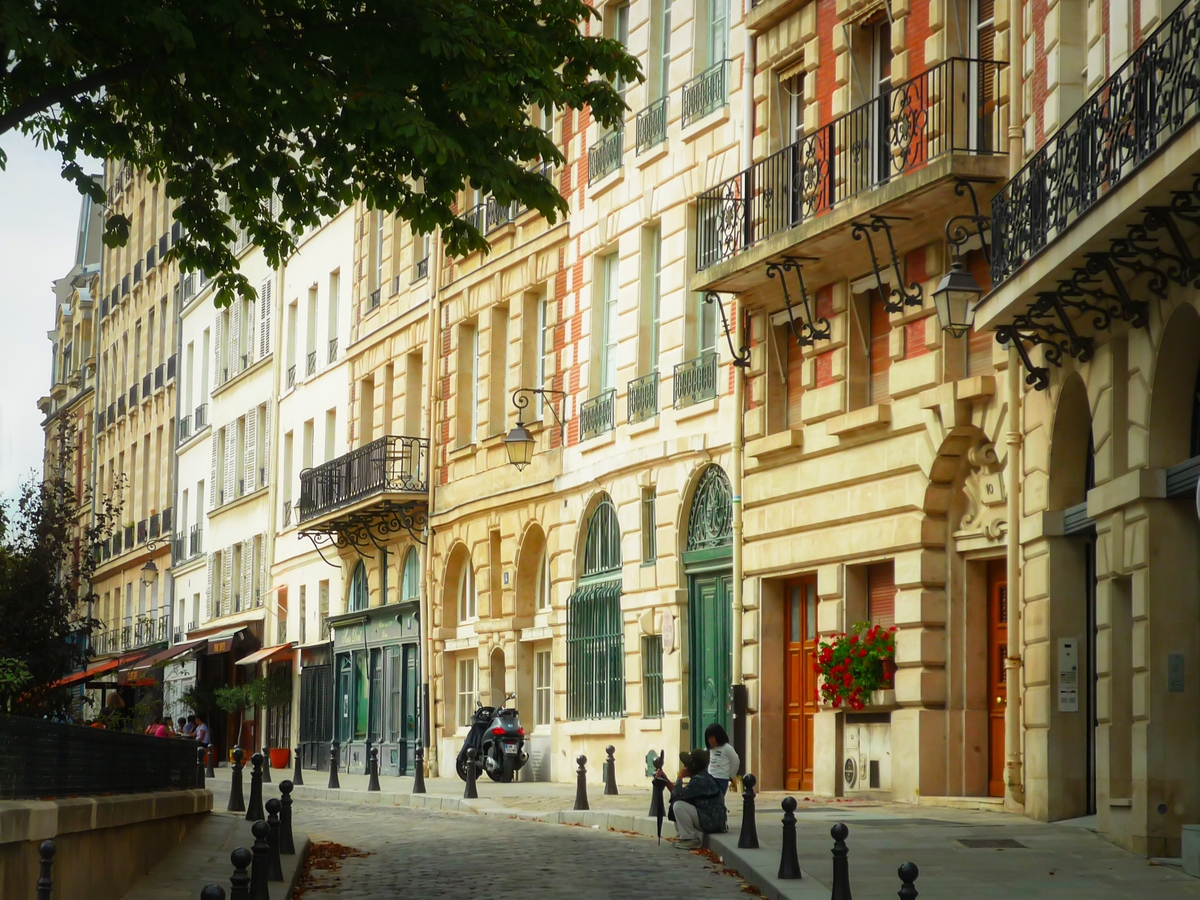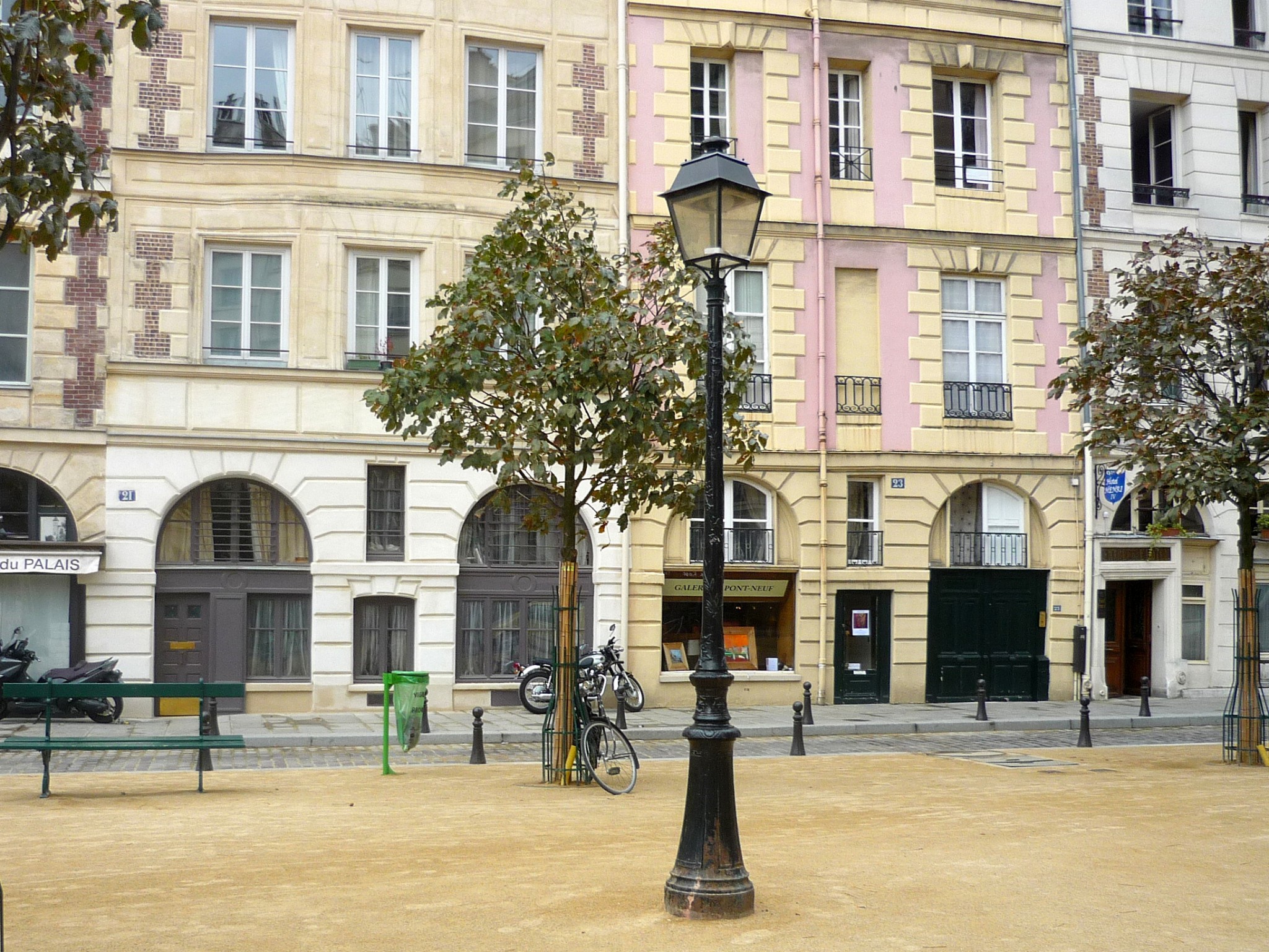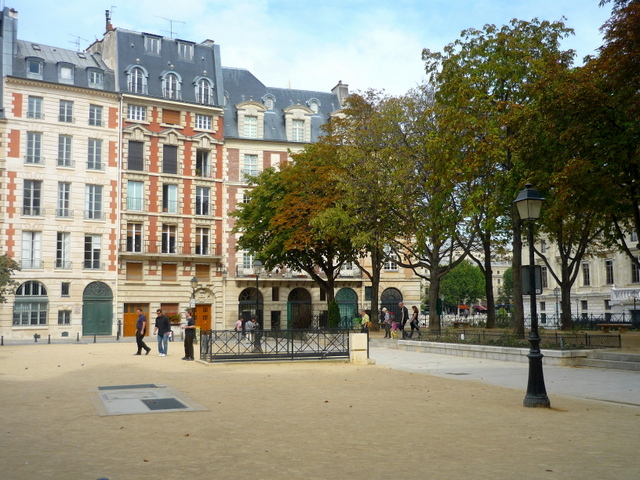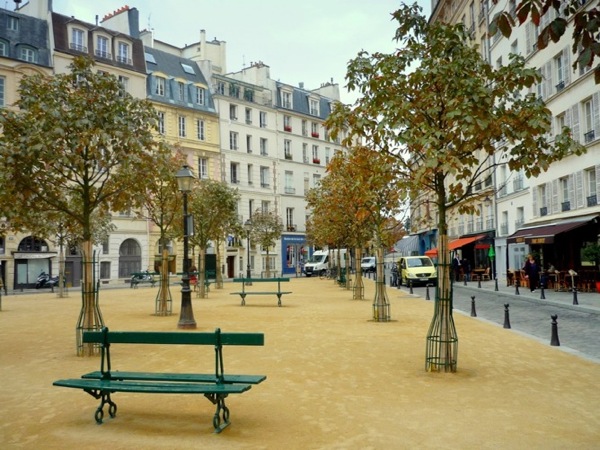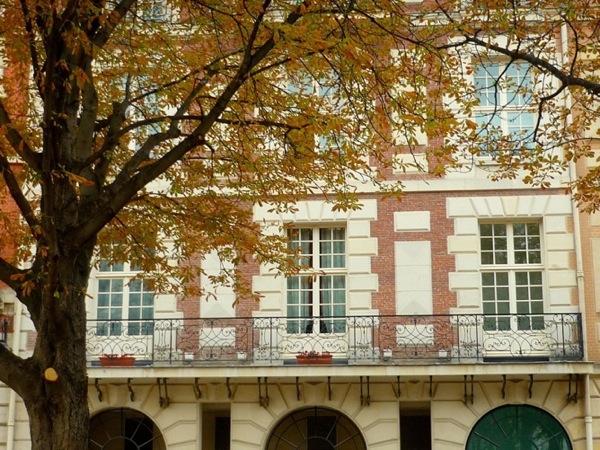Place Dauphine is one of the most romantic squares in Paris. A contemporary of the Place des Vosges in the Marais district, many consider it one of the oldest squares in Paris. That said, the square is a paradox. You will find it right in the centre of Paris, and it is relatively unknown to tourists. It is home to some art galleries and small restaurant-cafés, so it is quite busy without the crowds of tourists.
A description of Place Dauphine
Along with the Palais de Justice, the Place Dauphine is the part of the Île de la Cité that belongs to the 1st arrondissement of Paris, while the rest of the island is part of the 4th arrondissement.
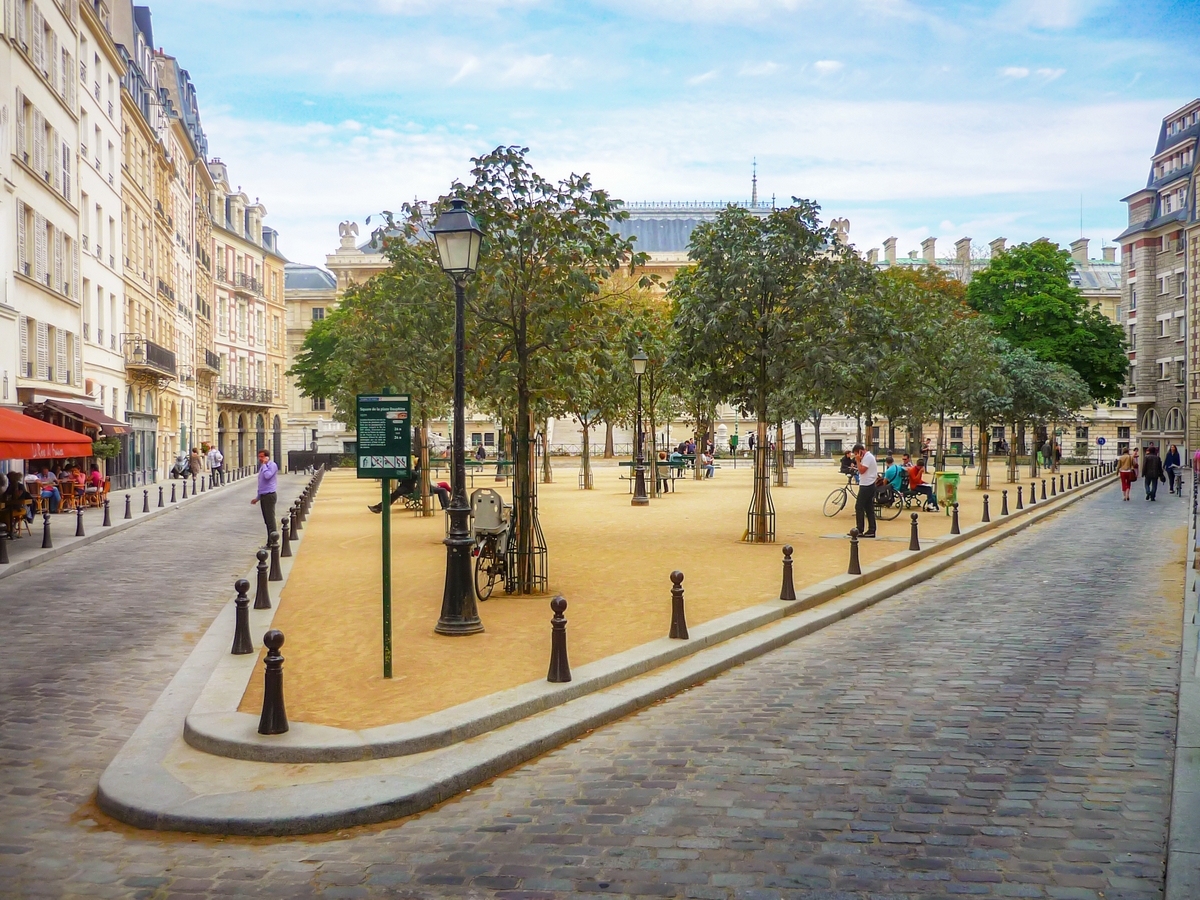
The triangular square of Place Dauphine is 102 metres long and 67 metres wide. It occupies a triangular space west of the Ile de la Cité.
The triangle tip opens in the middle of the Pont Neuf bridge onto the Place du Pont-Neuf via the short Rue Henri-Robert (once considered part of the square).
Rue de Harlay demarcates the square’s east side from the Palais de Justice.
On the other two sides of the square, a row of buildings separates it from the Quai de l’Horloge to the north and the Quai des Orfèvres to the south.
This enclosed system disappeared when the triangle was destroyed around 1870.
The history of Place Dauphine
The public square was named after the Dauphin of France, the future Louis XIII.
The Place Dauphine is the result of the construction of the Pont-Neuf, the completion of which meant that there was a gap between this new crossing point, which was already very busy, and the buildings of the Palais de la Cité, which had become one of the focal points of Parisian commerce.
The location of the square
The land occupied by this square was once home to an orchard (the Verger du Roi) and two islands:
- Île au Bureau, the larger of the two, was named after Hugues Bureau, who bought it on the 6th of February 1462,
- Île à la Gourdaine, less wide but longer, was occupied by the “de la Gourdaine” mill.

The development of the tip of the Île de la Cité
The construction of the Pont Neuf between 1578 and 1607 meant that these islets became part of the island. This was followed by the development of the Quai des Orfèvres and the Quai de l’Horloge in 1580.
In 1607, King Henry IV created a square on the western tip of the Île de la Cité, between the Pont-Neuf and the Palais de la Cité.
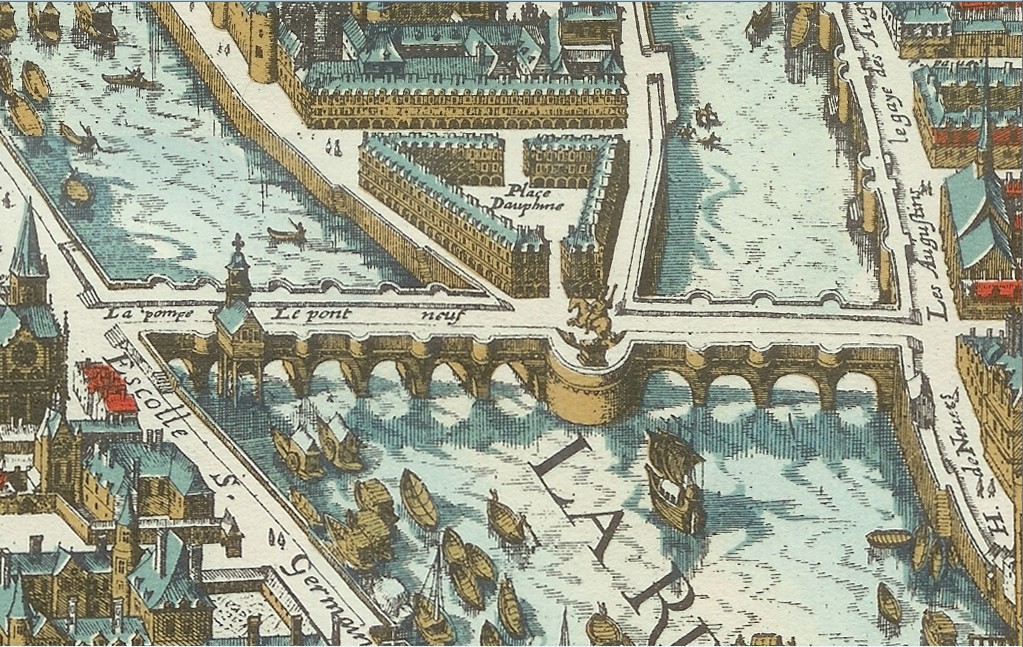
A uniform architectural ensemble
This new square would follow the site’s shape while responding to a uniform construction programme: three-storey houses in the style of the Place Royale, now the Place des Vosges.
Initially, the square consisted of 32 uniform houses built in brick and stone quoins with slate roofs, comprising:
- a ground floor with a gallery,
- two square storeys and
- an attic storey.
All that remains intact of this uniform architectural ensemble are the two corner pavilions on the Pont-Neuf. All the other houses were modified, demolished, rebuilt or raised in height from the 18th century onwards.
![Place Dauphine © Nolege - licence [CC0] from Wikimedia Commons](https://frenchmoments.eu/wp-content/uploads/2013/07/Place-Dauphine-©-Nolege-licence-CC0-from-Wikimedia-Commons.jpg)
An enclosed space
When it was created, the enclosed area of the Place Dauphine was dedicated to the activities of bankers and merchants. Close to the Louvre, the Place Dauphine became a place of exchange and stock exchange, attracting goldsmiths, spectacle-makers and engravers.
It only communicated with the outside world via two passageways, at the tip and in the centre of the base.
Due to the site’s configuration, the square is not entirely aligned with the bridge median. As a result, it is impossible to see the Henri IV statue standing on the central median of the Pont-Neuf from the square.
The eastern side of the square
In 1874, 267 years after its construction, the even-numbered side of rue de Harlay (the base of the square’s triangle) was demolished to clear the rear facade of the Palais de Justice, constructed in 1854. Trees have now been planted in the space they once occupied to mark the spot. The Place Dauphine was amputated from one of the sides of its triangle, causing it to lose its original character as an almost enclosed space.
![Place Dauphine circa 1865. Photo by Charles Marville [Public Domain via Wikimedia Commons]](https://frenchmoments.eu/wp-content/uploads/2013/07/Place-Dauphine-circa-1865.-Photo-by-Charles-Marville-Public-Domain-via-Wikimedia-Commons-scaled.jpg)
The square’s eastern side is bordered by the monumental western façade of the Palace of Justice (Palais de Justice), which shows fine collonaded architecture evoking ancient temples.
It is believed that the Dendera Temple inspired French architect Duc in Egypt.
The façade features a rich decoration with several allegoric characters representing values such as truth, protection, justice and equity. Many animals are depicted, in particular, two great eagles perched on the angle tops of the building and two lions framing the staircase, symbolising strength and power.
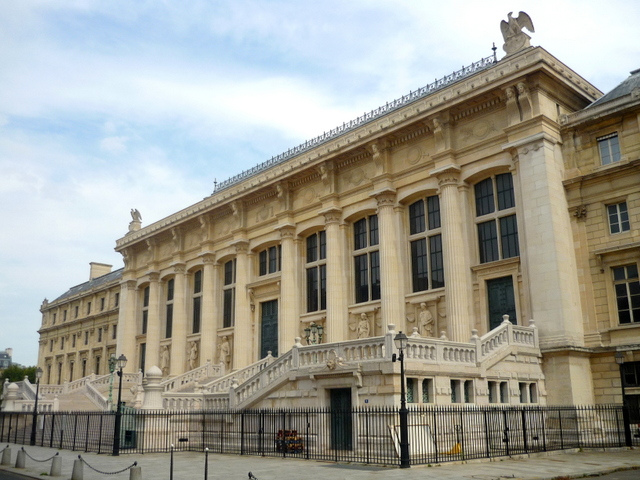
Anecdotes about the square
Here are a few interesting anecdotes about the Place Dauphine.
Place de Thionville
During the French Revolution and the First Empire, the square lost its name of the king’s son. Between 1792 and 1814, it was renamed “Place de Thionville” in memory of the inhabitants’ heroic resistance and Thionville garrison in Lorraine against the Prussian armies in 1792.
A fountain in the centre of the square
From 1803 to 1874, the square was adorned with a fountain. This was the Desaix fountain, erected in honour of General Desaix, who died at the battle of Marengo in 1800. According to historian Jacques Hillairet, this fountain was the first monument erected in Paris to honour a person who was not a monarch. Dismantled in 1874, the fountain was transferred to Riom in 1906.
![Fontaine Desaix. Photo by Louis Albert Guislain Bacler d'Albe 1761-1824. [Public Domain via Wikimedia Commons]](https://frenchmoments.eu/wp-content/uploads/2013/07/Fontaine-Desaix.-Photo-by-Louis-Albert-Guislain-Bacler-dAlbe-1761-1824.-Public-Domain-via-Wikimedia-Commons.jpg)
The centre of Paris!
According to IGN calculations published in 2016, the geographical centre of Paris is located on the Place Dauphine, at coordinates 48° 51′ 24″ N, 2° 20′ 32″ E.
A square of the (French) stars
Yves Montand (1921-1991) and Simone Signoret (1921-1985) lived at number 15.
Quoted in a famous French song
The singer Jacques Dutronc quoted it in Jacques Lanzmann’s song Il est cinq heures, Paris s’éveille, released in 1968, alongside other Paris landmarks (Place Blanche, Boulevard Montparnasse, La Villette, the Eiffel Tower, the Arc de Triomphe and the Concorde obelisk).
More photos and info
- Learn more about the little secrets of Pont-Neuf on the blog
- Discover the First arrondissement of Paris
- Read more about Place Dauphine on Wikipedia (in French)
Here are more photos of the square taken during our walks in Paris:
